The 3rd Degree Masonic Ritual, or Master Mason Degree, represents the final step in a Freemason’s initiatic journey, embodying enlightenment, moral lessons, and the legend of Hiram Abiff;
1․1 Overview of the Master Mason Degree
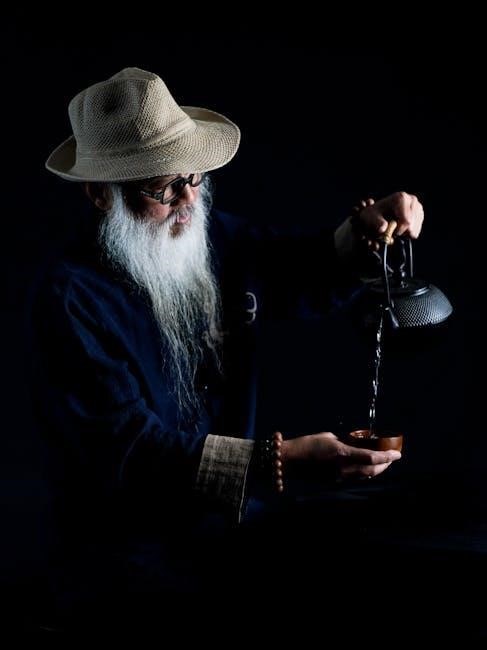
The Master Mason Degree, or Third Degree, is the highest rank in Freemasonry, symbolizing spiritual enlightenment and moral maturity․ It revolves around the legend of Hiram Abiff, a skilled architect of King Solomon’s Temple, whose virtues of loyalty and integrity are central to the ritual․ The ceremony emphasizes themes of resurrection and eternal life, using powerful symbolism to convey ethical and philosophical teachings․ Candidates undergo a transformative experience, often described as a symbolic death and rebirth, to illustrate the triumph of virtue over adversity․ This degree culminates the initiatic journey, preparing members to embrace their role within the fraternity and society at large․ Its profound lessons aim to inspire personal growth, brotherhood, and a deeper understanding of life’s purpose․
1․2 Importance of the Third Degree in Freemasonry
The Third Degree holds profound significance as the culmination of a Freemason’s initiatic journey, marking their full integration into the fraternity․ It is revered as the most sublime degree, encapsulating the essence of Masonic philosophy and ethics․ The ritual imparts lessons on immortality, moral responsibility, and the triumph of virtue over adversity, profoundly influencing a member’s spiritual and personal development․ This degree is not merely a ceremony but a transformative experience that reinforces the principles of brotherhood, compassion, and self-improvement․ It serves as a foundation for further Masonic education and involvement in appendant bodies, ensuring the continued growth of the individual and the fraternity as a whole․ The Third Degree’s teachings remain central to Freemasonry’s mission of fostering enlightenment and unity among its members․
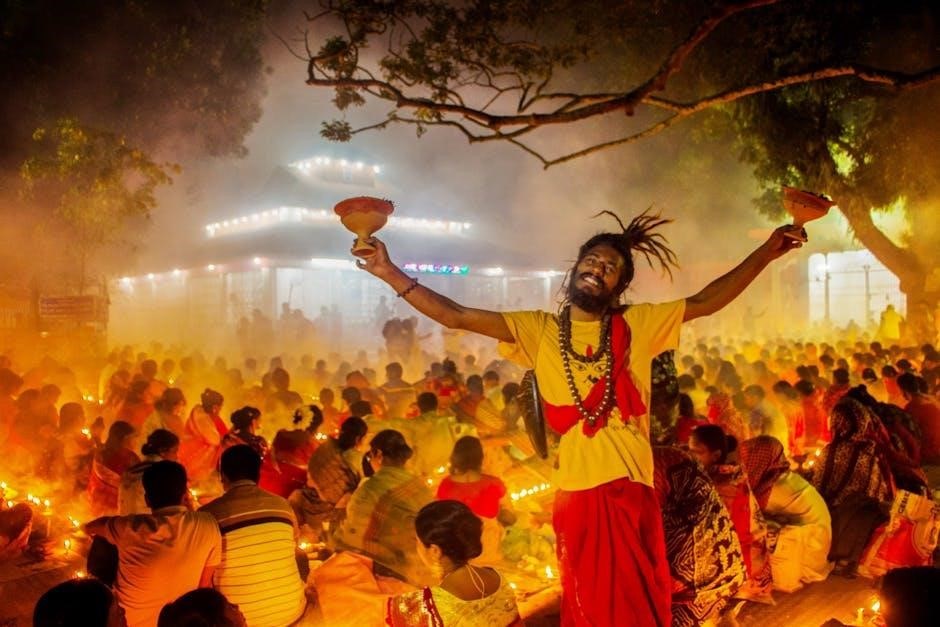
Historical Background of the 3rd Degree
The 3rd Degree traces its origins to ancient Masonic legends, evolving over centuries to incorporate symbolic narratives like the story of Hiram Abiff, reflecting historical influences on Freemasonry․
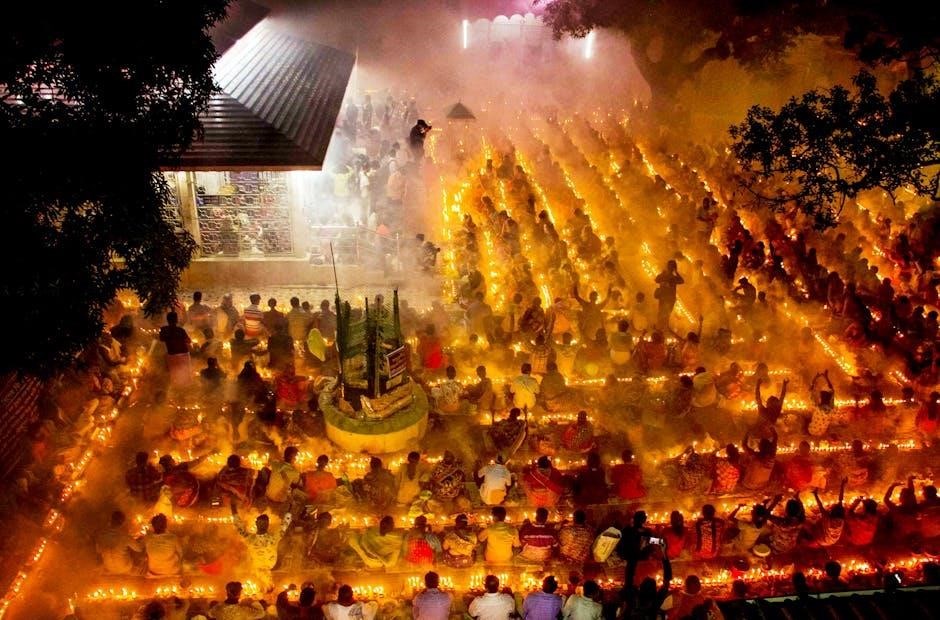
2․1 Origins of the Master Mason Ritual
The Master Mason Ritual, or Third Degree, originates from ancient Masonic legends, particularly the story of Hiram Abiff, the master builder of Solomon’s Temple․ This narrative, steeped in symbolism, reflects themes of betrayal, sacrifice, and resurrection, which are central to the ritual․ Historical records suggest that the modern version of the Third Degree emerged in the 18th century, influenced by earlier Masonic practices and philosophical traditions․ The ritual incorporates elements from biblical accounts, alchemy, and Hermeticism, creating a rich tapestry of symbolic meaning․ Over time, the ceremony has evolved, but its core themes of enlightenment and moral teachings have remained consistent, making it a cornerstone of Freemasonry․
2․2 Evolution of the Third Degree Ceremony
The Third Degree ceremony has evolved significantly over centuries, influenced by historical and cultural shifts․ Originating from ancient Masonic legends, the ritual was formalized in the 18th century, becoming a cornerstone of Freemasonry․ Early versions emphasized symbolic death and rebirth, drawing parallels to the legend of Hiram Abiff․ Over time, the ceremony incorporated philosophical and ethical teachings, aligning with Enlightenment ideals․ By the 19th century, the ritual had become more structured, with standardized practices across lodges․ The 20th century saw adaptations to reflect modern values while preserving its core symbolism․ Today, the Third Degree remains a profound experience, blending tradition with contemporary relevance, ensuring its continued significance in Masonic practice․
Symbolism in the 3rd Degree Ritual
The 3rd Degree Ritual is rich in symbolism, emphasizing themes of resurrection, morality, and divine truth․ The grave, sprig of acacia, and letter “G” are central symbols, representing immortality and ethical guidance․
3․1 The Legend of Hiram Abiff
The legend of Hiram Abiff is central to the 3rd Degree Masonic Ritual, symbolizing fidelity, integrity, and the ultimate sacrifice․ As the chief architect of King Solomon’s Temple, Hiram is revered for his wisdom and craftsmanship․ The narrative recounts his tragic death at the hands of three ruffians seeking the secrets of the temple, which he refused to reveal․ His body was buried under a sprig of acacia, symbolizing immortality and the triumph of virtue over evil․ This story teaches moral lessons about devotion to one’s principles and the pursuit of divine truth․ The legend underscores the importance of resilience and the eternal nature of the soul, aligning with Masonic ideals of brotherhood and ethical conduct․ Hiram’s legacy is commemorated annually, reinforcing his significance in Masonic philosophy and ritualistic practices․
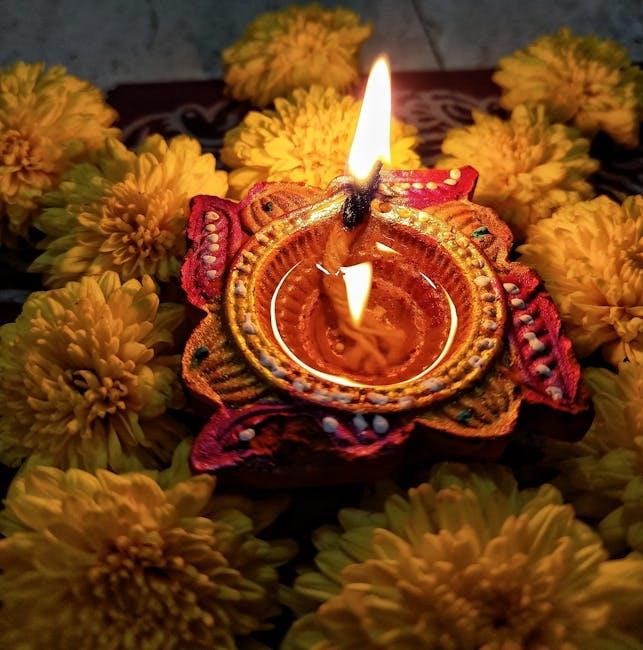
3․2 Symbolic Death and Rebirth
The 3rd Degree Masonic Ritual includes a profound symbolic death and rebirth, representing the initiate’s spiritual transformation․ This dramatic enactment signifies the shedding of old, inferior values and the embrace of higher moral and philosophical truths․ The candidate, blindfolded and guided through the lodge, experiences a simulated death, symbolizing the end of ignorance and selfishness․ The rebirth is marked by the restoration of light, symbolizing enlightenment and a renewed commitment to Masonic principles․ This rite of passage mirrors ancient initiatic traditions, emphasizing personal growth and the pursuit of wisdom․ The acacia tree, a symbol of immortality, is often associated with this ritual, reinforcing the idea of eternal life and the soul’s transcendence․ This element of the ceremony underscores Freemasonry’s focus on ethical and spiritual development, preparing the candidate for a life of service and brotherhood․
Preparation for the 3rd Degree Ceremony
Preparation involves moral reflection, specific attire, and physical readiness․ Candidates must be divested of metallic substances, symbolizing humility and equality, ensuring a pure and sincere approach to the ritual․
4․1 Requirements for Candidates
Candidates for the 3rd Degree must meet specific requirements, including a proven understanding of previous degrees and a commitment to Freemasonry’s principles․ They must be divested of all metallic substances, symbolizing humility and equality․ The candidate is neither naked nor clothed but prepared in a manner reflecting purity of intention․ Physical preparation involves being barefoot, emphasizing vulnerability and sincerity․ Moral readiness is equally crucial, as the candidate must reflect on their actions and demonstrate a willingness to embrace the deeper teachings of the ritual․ These requirements ensure the candidate approaches the ceremony with the proper mindset, ready to endure the symbolic trials and embrace the philosophical lessons embedded in the 3rd Degree․ The preparation is both external and internal, fostering a state of readiness for the transformative experience ahead․
4․2 Ritualistic Preparation
The lodge is prepared for the 3rd Degree ceremony with specific symbolic arrangements, ensuring an atmosphere of solemnity and reverence․ The Worshipful Master oversees the setup, while officers assume their respective roles, each contributing to the ritual’s integrity․ The lodge is adorned with symbols representing mortality, resurrection, and divine wisdom, such as the coffin, skull, and crossbones․ These elements underscore the ceremony’s themes of symbolic death and rebirth․ The brethren are reminded of their obligations to maintain secrecy and uphold the principles of Freemasonry․ The preparation culminates in the opening of the lodge on the 3rd Degree, signaling the commencement of the Master Mason ritual․ This meticulous setup ensures the candidate’s journey is conducted with the utmost respect for tradition and meaning․
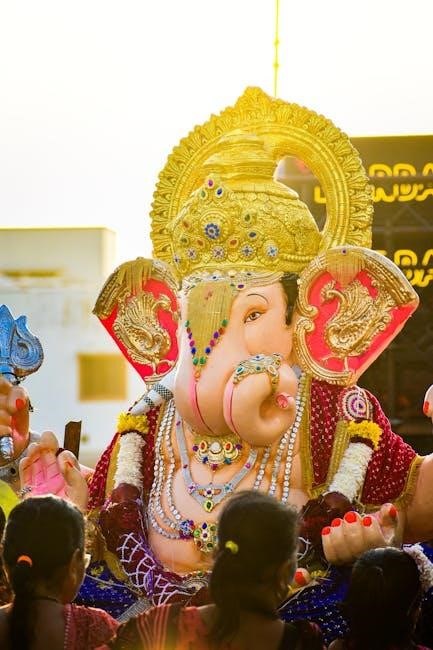
The Ceremony of the 3rd Degree
The 3rd Degree ceremony involves symbolic acts, emphasizing moral lessons and the legend of Hiram Abiff, conducted with solemnity and reverence, culminating in the candidate’s enlightenment․
5․1 Structure of the Master Mason Ritual
The Master Mason ritual is structured as a series of symbolic acts, beginning with the preparation of the candidate and the opening of the lodge in the Third Degree․ The ceremony includes a dramatic reenactment of the legend of Hiram Abiff, emphasizing his tragic death and subsequent discovery, which serves as a metaphor for moral and philosophical truths․ The ritual progresses through stages of symbolic death, discovery, and rebirth, culminating in the candidate’s enlightenment․ Key elements include the use of lodge furnishings, such as the grave and the sprig of acacia, to convey themes of immortality and renewal․ The structure is designed to impart profound lessons about brotherhood, ethics, and personal growth, ensuring the candidate fully grasps the significance of Freemasonry’s highest degree․
5․2 Key Elements of the Ceremony
The 3rd Degree ceremony revolves around the legend of Hiram Abiff, a central figure symbolizing fidelity, integrity, and the pursuit of truth․ Key elements include the dramatic reenactment of Hiram’s tragic death and his subsequent discovery, emphasizing themes of betrayal, redemption, and resurrection․ The ritual incorporates symbolic acts such as the candidate’s preparation, the opening of the lodge in the Third Degree, and the use of Masonic symbols like the grave and the sprig of acacia․ The ceremony also involves the delivery of a solemn lecture by the Worshipful Master, which underscores the philosophical and moral lessons of the degree․ These elements collectively create a profound experience, designed to inspire the candidate to embrace Freemasonry’s core values of brotherhood, ethical conduct, and personal enlightenment․
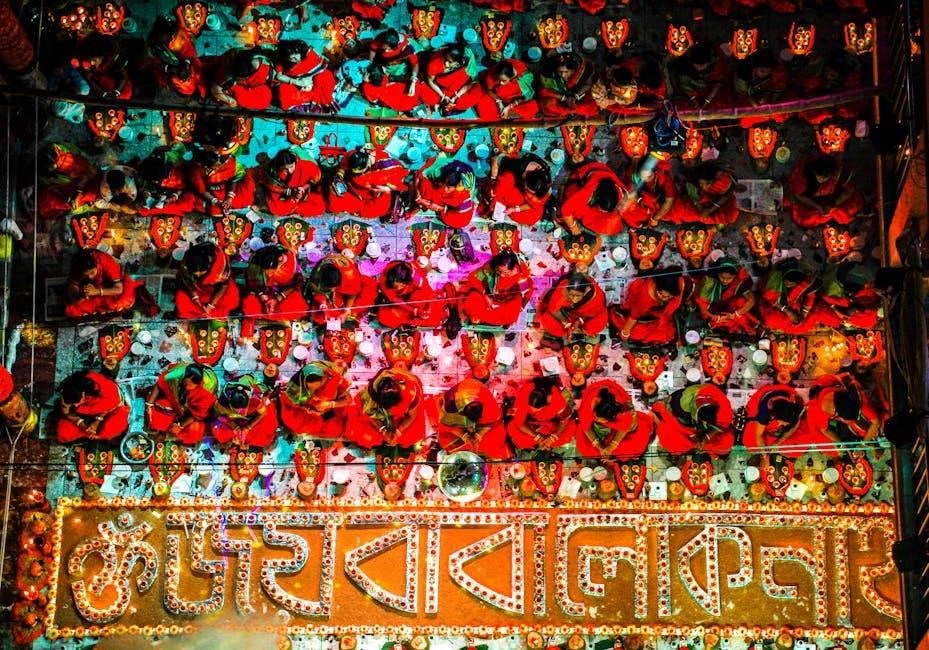
The Significance of the 3rd Degree
The 3rd Degree symbolizes the pinnacle of Masonic initiation, emphasizing enlightenment, moral growth, and the immortality of the soul, guiding members toward ethical living and self-improvement․
6․1 Philosophical Teachings
The 3rd Degree imparts profound philosophical truths, focusing on the immortality of the soul and the importance of moral integrity․ It encourages Freemasons to reflect on their actions and decisions, emphasizing that life’s purpose transcends physical existence․ The ritual underscores the pursuit of wisdom, justice, and self-discovery, aligning with Masonic principles of personal growth and ethical responsibility․ By exploring these teachings, members are inspired to lead virtuous lives, fostering brotherhood and contributing positively to society․ The philosophical underpinnings of the Third Degree serve as a foundation for lifelong contemplation and moral development․
6․2 Ethical and Moral Lessons
The 3rd Degree Masonic Ritual emphasizes ethical and moral lessons, central to Freemasonry’s teachings․ It underscores the importance of honesty, integrity, and respect for others․ The ceremony highlights the consequences of betrayal and the value of fidelity, as illustrated by the legend of Hiram Abiff․ By depicting the tragic events surrounding his death, the ritual reinforces the moral imperative to uphold truth and justice․ Freemasons are encouraged to reflect on their actions, fostering self-improvement and a commitment to high moral standards․ These lessons inspire brotherhood and mutual support, guiding members to lead virtuous lives and contribute positively to society․ The ethical teachings of the Third Degree serve as a lifelong moral compass, promoting harmony and ethical conduct in all aspects of life․
Post-Ceremony Integration
Post-ceremony integration involves welcoming the new Master Mason into the brotherhood, fostering fellowship, and encouraging continued Masonic education and active participation in lodge activities․
7․1 Brotherhood and Fellowship
The third-degree ceremony strengthens bonds among Masons, fostering a deep sense of brotherhood and fellowship․ The initiation into the Master Mason degree unites members through shared values and rituals, creating a lifelong connection․ The lodge becomes a space for mutual support, where brethren gather to celebrate achievements and navigate life’s challenges together; Fellowship extends beyond ceremonies, encouraging participation in communal activities and charitable endeavors․ New Master Masons are warmly welcomed into the fraternity, reinforcing the principle of unity․ This phase emphasizes the importance of collaboration and camaraderie, ensuring that the newly initiated feel integrated and valued within the Masonic community․ Brotherhood and fellowship are cornerstones of Freemasonry, and the third-degree ritual solidifies these principles, preparing members for a lifetime of fraternal engagement and personal growth․
7․2 Continuing Masonic Education
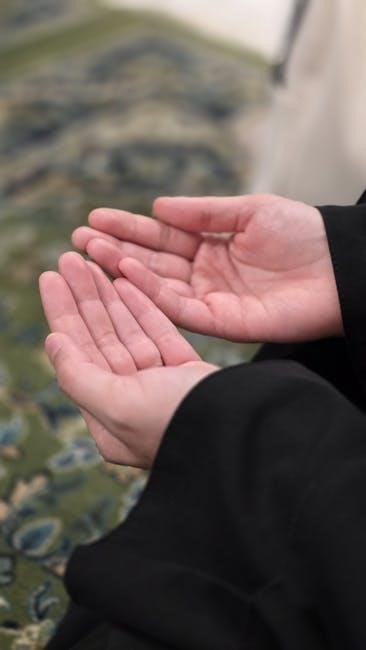
Following the third-degree ceremony, Masons are encouraged to pursue continuing Masonic education to deepen their understanding of the craft․ This education often involves studying Masonic philosophy, history, and symbolism through various resources and lectures․ Many lodges offer educational programs, workshops, and discussions to help members explore the deeper meanings of the rituals and teachings․ Additionally, brethren may join appendant bodies, such as the Scottish Rite or York Rite, which provide further degrees and insights into Masonic principles․ These opportunities allow Master Masons to expand their knowledge and strengthen their commitment to the fraternity․ Continuing education fosters intellectual and spiritual growth, enabling Masons to better apply the lessons of Freemasonry in their personal and professional lives․ This lifelong journey of learning enriches the Masonic experience and promotes a deeper appreciation of the craft’s timeless values․
Appendant Bodies and the 3rd Degree
Appendant bodies like the Scottish Rite and York Rite offer further Masonic education, expanding on the principles introduced in the 3rd Degree through additional degrees and teachings․
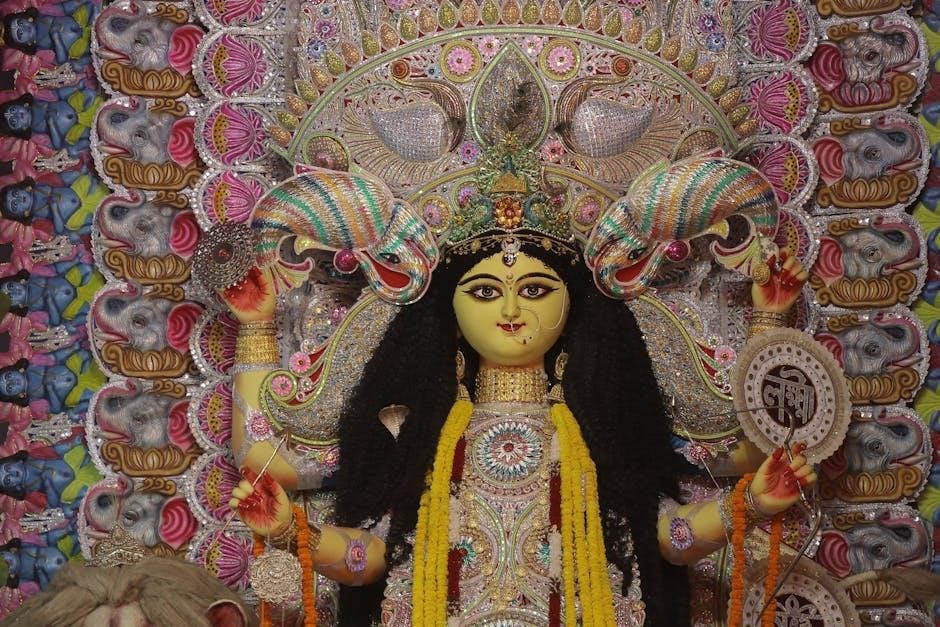
8․1 Scottish Rite and the 3rd Degree
The Scottish Rite, an appendant body of Freemasonry, offers a deeper exploration of Masonic philosophy beyond the 3rd Degree․ It consists of 29 additional degrees, each providing further moral and intellectual instruction․ The Scottish Rite emphasizes the principles of liberty, equality, and fraternity, aligning with the ethical teachings of the Master Mason Degree․ Members who attain the 3rd Degree in their Blue Lodge are eligible to join, where they engage in rituals that expand upon the symbolism introduced in the 3rd Degree․ The Scottish Rite’s rituals often delve into themes of leadership, personal growth, and historical perspectives, enriching the Masonic experience for those seeking further enlightenment․
8․2 Relationship with Other Masonic Orders
The 3rd Degree serves as a foundation for further Masonic exploration within various appendant bodies and orders․ Many Masonic organizations, such as the York Rite and the Order of the Eastern Star, build upon the principles introduced in the Master Mason Degree․ These orders often provide additional rituals, teachings, and moral lessons that complement the 3rd Degree, offering deeper insights into Masonic philosophy․ While the Scottish Rite is one of the most prominent, other orders also play significant roles in a Mason’s journey, emphasizing different aspects of the Craft․ These organizations foster a broader understanding of Freemasonry’s ethical and symbolic framework, allowing members to enrich their personal growth and commitment to the fraternity․
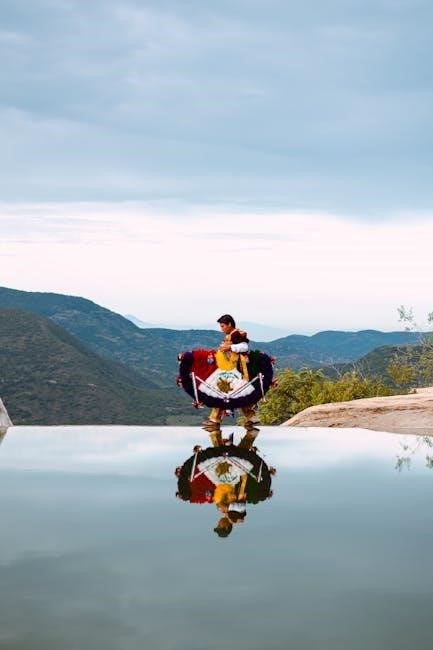
Modern Relevance of the 3rd Degree
The 3rd Degree remains a cornerstone of Freemasonry, offering timeless lessons on morality, brotherhood, and personal growth, continuing to inspire Masons in contemporary society․
9․1 Challenges in Contemporary Freemasonry
Contemporary Freemasonry faces challenges such as declining membership, misunderstandings about its purpose, and adapting to modern societal changes while preserving its traditions․ Despite these obstacles, the 3rd Degree remains a vital part of Masonic identity, offering enduring lessons on morality and brotherhood․ The fraternity must balance its historical roots with the needs of a changing world, ensuring relevance without compromising core values․ Maintaining secrecy around rituals like the 3rd Degree, while fostering transparency about Freemasonry’s goals, is crucial․ Additionally, engaging younger generations and addressing misconceptions are key to sustaining the Order’s legacy․ The evolution of the 3rd Degree’s interpretation can help meet these challenges while upholding its profound significance․
9․2 Opportunities for Personal Growth
The 3rd Degree Masonic Ritual offers profound opportunities for personal growth, fostering self-reflection, ethical awareness, and spiritual development․ By engaging with its symbolic teachings, individuals can gain deeper insights into moral responsibility and the pursuit of wisdom․ The ritual’s emphasis on the immortality of the soul encourages Masons to reflect on their actions and their impact on the world․ Additionally, the fraternity’s emphasis on brotherhood and mutual support provides a nurturing environment for personal development․ Masons are encouraged to apply the lessons of the 3rd Degree in their daily lives, striving for continuous improvement and service to others․ This journey of self-discovery and enlightenment equips individuals with the tools to navigate life’s challenges with integrity and purpose, aligning their actions with the principles of Freemasonry․
The 3rd Degree Masonic Ritual is a transformative experience that embodies the core principles of Freemasonry, offering profound lessons in morality, brotherhood, and personal enlightenment․ Through its rich symbolism and historical narratives, the Master Mason Degree provides a deep exploration of life’s mysteries and the pursuit of wisdom․ The ritual’s emphasis on ethical responsibility and the immortality of the soul inspires Masons to lead virtuous lives and contribute positively to society․ As the highest degree in Ancient Craft Masonry, it serves as a culmination of the initiatic journey, equipping individuals with the tools for continuous self-improvement and service to others․ The 3rd Degree remains a cornerstone of Freemasonry, ensuring its teachings endure for future generations, guiding them toward a path of enlightenment and fellowship․

